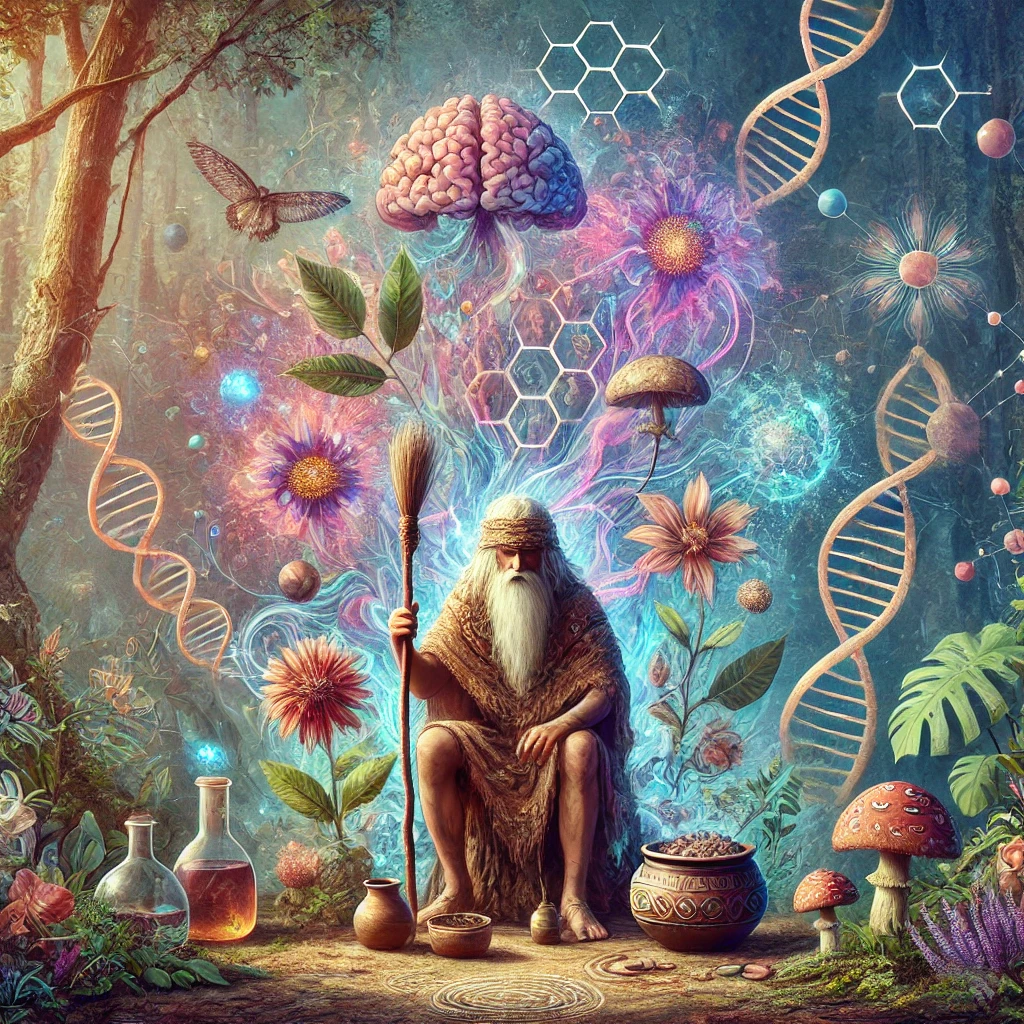In recent years, there has been a growing interest in integrating traditional healing practices with modern therapeutic approaches. Shamanism, one of the oldest spiritual and healing traditions, has found a place in contemporary mental health care. This post explores how shamanic rituals can complement modern mental health practices, creating a holistic approach to healing.
The Intersection of Shamanism and Modern Mental Health:

The integration of shamanic practices into modern mental health care represents a significant shift towards holistic healing. While traditional therapy often focuses on cognitive and behavioral aspects, shamanic healing addresses the spiritual and energetic dimensions of mental health. This approach aligns with the principles of integrative medicine, which emphasizes treating the whole person—mind, body, and spirit.
Relevant Resource:
- Institute for Integrative Health, “Holistic Approaches to Mental Health”
Link
Shamanic Practices and Their Psychological Impact:

Shamanic practices such as soul retrieval, energy clearing, and journeying have profound psychological effects. For instance, soul retrieval, a core shamanic ritual, involves reclaiming lost parts of the soul that may have fragmented due to trauma. This process can help individuals heal from deep emotional wounds and regain a sense of wholeness.
Research has shown that rituals like these can create a powerful placebo effect, enhancing the individual’s belief in their ability to heal. This belief is critical in mental health recovery, as it can boost the effectiveness of therapy and promote long-term well-being.
Relevant Resource:
- Winkelman, M. (2010). “Shamanism as Neurotheology and Evolutionary Psychology”
- American Behavioral Scientist
- Link
Scientific Perspectives on Shamanic Healing:

Recent studies have started to validate the efficacy of shamanic practices from a scientific perspective. For example, research in neuropsychology suggests that shamanic rituals can alter brain wave patterns, leading to states of consciousness that are conducive to healing. These altered states can facilitate deep emotional processing, similar to the effects of mindfulness and meditation.
Furthermore, the use of psychedelics in therapy, which often mirrors shamanic practices, has shown promise in treating conditions such as PTSD and depression. The psychoactive substances used in traditional shamanic ceremonies, like Ayahuasca, have been found to increase neural plasticity, promoting the brain’s ability to rewire itself and recover from trauma.
Relevant Resources:
ntegrating Shamanism with Modern Therapy:

Therapists and counselors are increasingly incorporating shamanic techniques into their practice. This integration often involves combining traditional talk therapy with shamanic journeying or energy work, providing a more comprehensive approach to mental health.
For instance, a therapist might guide a client through a visualization exercise that resembles a shamanic journey, helping them access deeper layers of their consciousness. This method can be particularly effective in uncovering and resolving subconscious conflicts that might not be accessible through conventional therapy alone.
van der Kolk, B. A. (2014). “The Body Keeps the Score: Brain, Mind, and Body in the Healing of Trauma.”
Ethical and Cultural Considerations:

While integrating shamanic practices into modern therapy holds great promise, it’s essential to approach this process with cultural sensitivity and respect. Shamanism is deeply rooted in indigenous cultures, and the commercialization or misappropriation of these practices can be harmful.
Practitioners should seek proper training and work with indigenous healers to ensure that their use of shamanic techniques is respectful and ethical. Moreover, it’s important to educate clients about the cultural origins of these practices and obtain informed consent before incorporating them into therapy.
Relevant Resource:
- Smith, L. T. (2012). “Decolonizing Methodologies: Research and Indigenous Peoples.”
Link
Conclusion:
The integration of shamanic practices into modern mental health care represents a promising frontier in the quest for holistic healing. By combining ancient wisdom with contemporary therapy, we can address mental health issues at their root, fostering deeper healing and personal transformation. As we continue to explore this intersection, it’s crucial to do so with respect, ethics, and an open mind.




